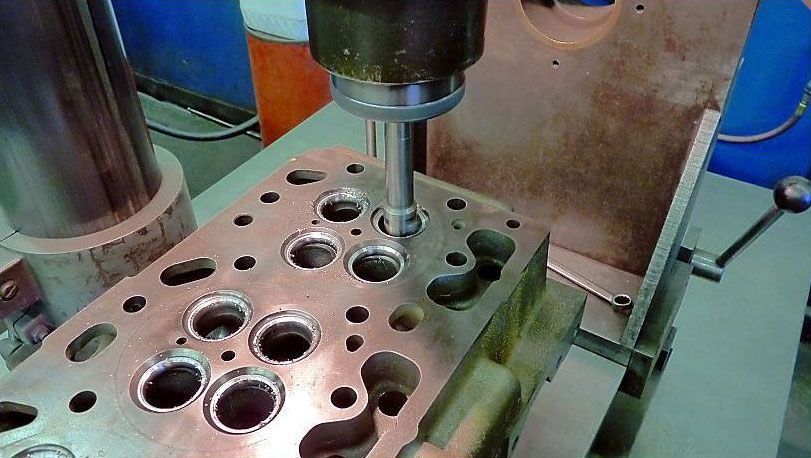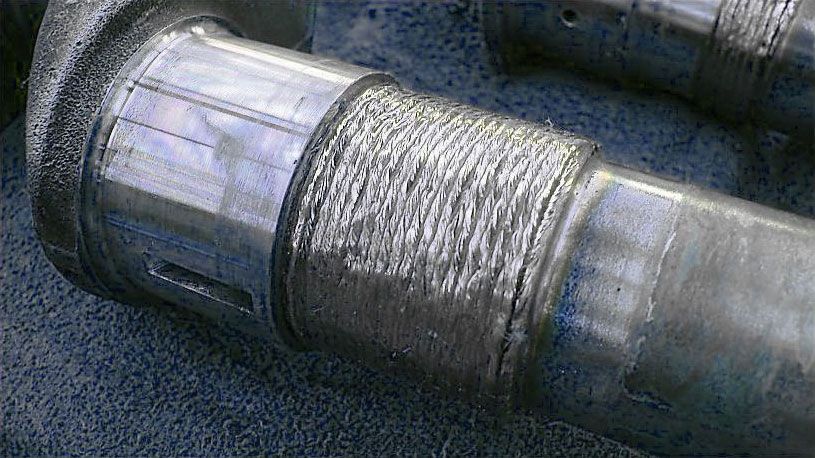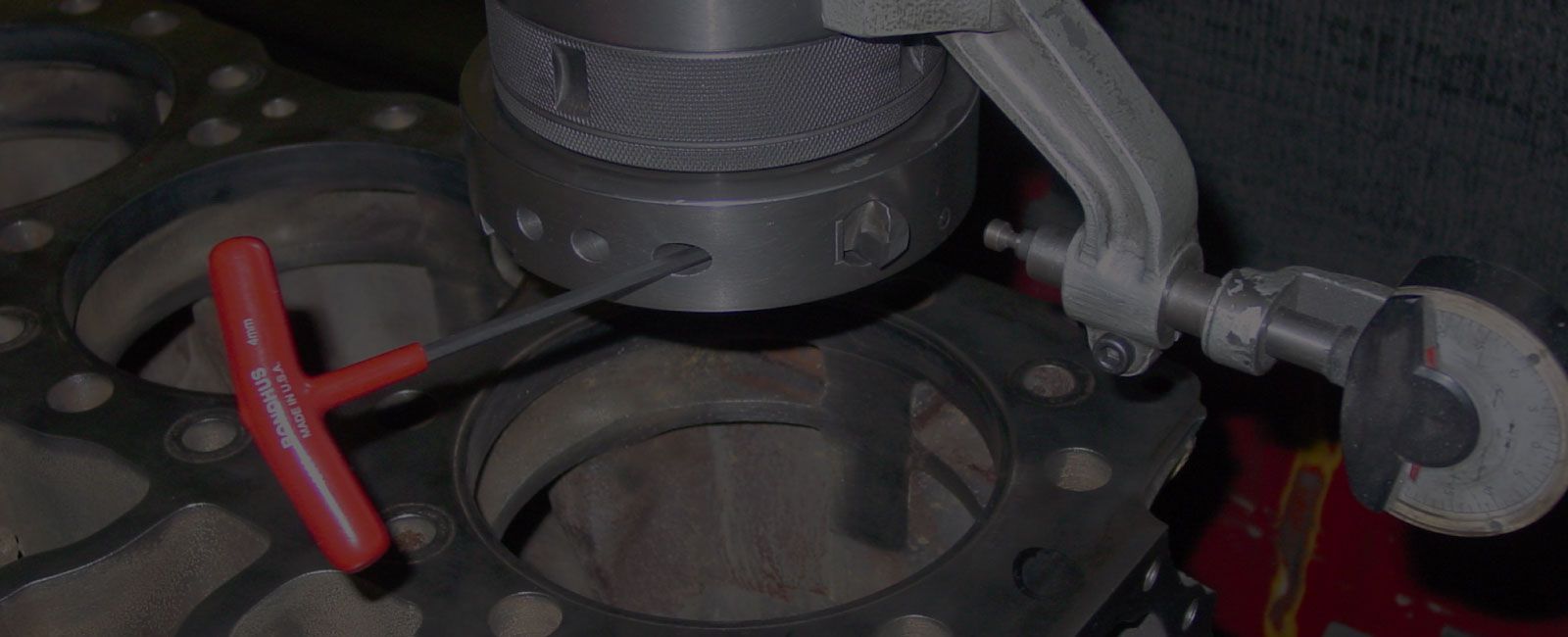Phone: 780-484-3030 | Toll Free: 1-866-226-2414
Providing Excellent Customer Service Since 1960
When to Rebuild Cylinder Heads: Expert Guide for Industrial Engines

A single faulty cylinder head can reduce engine efficiency by up to 30% and lead to catastrophic engine failure if left unaddressed. Understanding when to pursue a cylinder head rebuild is crucial for maintaining industrial engine performance and preventing costly breakdowns.
However, many maintenance managers struggle to identify the right time for rebuilding cylinder heads, often waiting until problems become severe. Professional cylinder head rebuilders emphasize that early detection and timely intervention can save thousands in repair costs. In Edmonton and other major industrial centers, industrial engine repair services report that most severe engine damage could have been prevented with proper cylinder head maintenance.
This comprehensive guide examines the key indicators, modern diagnostic methods, and industry-specific requirements for cylinder head rebuilding. We'll also analyze the cost-benefits of rebuilding versus replacement and explore the latest technologies shaping the future of engine maintenance.
Key Signs Your Cylinder Head Needs Rebuilding
Recognizing the early warning signs of cylinder head issues is crucial for preventing major engine failures. Professional cylinder head rebuilders report that worn and damaged cam journals rank among the most frequent problems in OHC engines [1].
Performance-related indicators
A significant drop in engine power often signals cylinder head problems. Low compression readings indicate potential valve seating issues or head gasket failures. Furthermore, rough idling and engine misfires point toward valve-related problems, particularly during cold starts [2].
Notable performance issues include:
- Loss of compression in one or more cylinders
- Unexplained decrease in fuel efficiency
- Difficulty maintaining consistent engine speed
Visual inspection markers
Physical examination reveals several critical indicators. Accordingly, experts emphasize checking for oil contamination, notably when the oil light indicator activates or visible leaks appear around the cylinder head [3].
Modern diagnostic procedures offer precise insights into cylinder head conditions. Pressure testing remains a fundamental method, with experts recommending testing at three times the normal cooling system pressure [5].
A comprehensive diagnostic approach includes:
- Compression testing across all cylinders
- Chemical analysis of coolant for combustion gas presence
- Thermal imaging to identify hot spots
Professional rebuilders emphasize that spark plug thread repair represents a common issue with aluminum heads [1]. Additionally, middle cam bores frequently show the most damage during overheating situations since the head typically bows up in the center [1].
For precise diagnosis, technicians utilize a block tester to identify combustion gas presence in the cooling system. A chemical reaction turns the testing fluid from blue to yellow, indicating combustion leaks [6]. Furthermore, experts recommend using a four-gas analyzer for the most accurate readings of hydrocarbon traces in the radiator [6].
Modern Diagnostic Methods for Cylinder Head Assessment
Modern technology has revolutionized cylinder head assessments, offering unprecedented accuracy in fault detection. Professional rebuilders now rely on a combination of advanced testing methods to ensure precise diagnostics.
Advanced pressure testing techniques
The VPT190 pressure tester represents a significant advancement in cylinder head testing. This stainless steel tank system operates at three times the normal cooling system pressure [7]. Moreover, the unit features dual independent heating elements and automated timing programs that optimize energy consumption [7].
Key testing specifications include:
- Maximum component width: 1350mm
- Insulated tank construction
- Automated temperature control
- Multiple heating programs
Digital inspection tools
Digital inspection technology has notably enhanced the ability to examine internal components without extensive disassembly. Modern inspection cameras feature 5.5mm micro-cameras that can access previously challenging areas [2].
Thermal imaging analysis
Thermal imaging has become an essential diagnostic tool for detecting hidden flaws. This non-destructive testing method identifies potential issues through temperature pattern analysis [8].
The technology proves especially valuable for:
- Detecting combustion leaks
- Identifying cooling system blockages
- Assessing component wear patterns
Thermal cameras produce live video images of heat radiation intensities, enabling technicians to identify abnormal temperature patterns [8]. This method proves particularly effective for preventive maintenance, as it can detect potential failures before they become catastrophic [8].
The combination of these three diagnostic approaches provides cylinder head rebuilders with comprehensive assessment capabilities. Through pressure testing, digital inspection, and thermal analysis, technicians can now identify previously undetectable issues through conventional methods.
Industry-Specific Rebuilding Requirements
Different industries demand unique approaches to cylinder head rebuilding, with each sector presenting its own set of challenges and specifications. Rather than applying a one-size-fits-all approach, successful rebuilds require industry-specific considerations.
Heavy machinery considerations
Heavy machinery cylinder heads operate under intense pressure and temperature conditions. Therefore, rebuilding these components requires special attention to material specifications and tolerances. The valve angles for diesel engines in this category are typically flatter, extending to the deck surface for optimal performance [9].
Key requirements for heavy machinery rebuilds include:
- Precision machining with CNC equipment for tight tolerances [9]
- Enhanced quality control processes for improved vehicle performance
- Specialized testing procedures for high-pressure operations
Marine engine specifications
Marine environments present unique challenges for cylinder head rebuilding. Saltwater exposure necessitates specialized approaches to prevent corrosion. The average life expectancy of a marine diesel engine is 5,000 hours before requiring a major overhaul [5].
Marine-specific rebuilding requirements include:
- Premium castings for all saltwater applications [11]
- Installation of brass plugs for enhanced corrosion resistance [11]
- Comprehensive pressure testing at elevated levels
Nevertheless, with proper maintenance, some marine diesel engines can operate for up to 8,000 hours before needing major overhaul work [5]. The rebuilding process must account for the unique challenges of marine environments while ensuring long-term reliability.
Cost-Benefit Analysis of Rebuilding vs Replacement
Making informed decisions about cylinder head maintenance requires careful evaluation of both financial and operational factors. The choice between rebuilding and replacement impacts immediate costs, long-term performance, and reliability.
Initial vs long-term costs
Operational disruption remains a critical factor in decision-making. Rebuilding can commence immediately, whereas new parts might require extended waiting periods for delivery [6]. This consideration becomes particularly significant for businesses where equipment downtime directly impacts revenue.
Key downtime factors include:
- Parts availability and shipping times
- Installation complexity
- Testing and break-in periods
- Operational certification requirements
Performance impact assessment
The performance implications of rebuilding versus replacement warrant careful consideration. Notably, rebuilt cylinder heads can achieve up to 300,000 miles of reliable service [4]. Additionally, modern rebuilding techniques offer significant environmental advantages, with studies showing:
- 63.8% reduction in environmental impact compared to new manufacturing [13]
- 50% lower production costs versus new components [13]
- Extended service life through advanced machining techniques [14]
Ultimately, rebuilt cylinder heads can match or exceed original specifications through proper reconditioning [6]. Integrating new materials and advanced machining processes ensures optimal combustion efficiency and heat dissipation [14]. This approach restores functionality and often enhances overall engine performance through improved designs and materials.
Latest Technologies in Cylinder Head Rebuilding
Technological innovations have transformed cylinder head rebuilding into a precision-driven process. Initially focusing on traditional machining methods, the industry has evolved to embrace digital solutions and advanced materials.
Advanced machining techniques
Digital CNC machining has emerged as the cornerstone of modern cylinder head rebuilding. The Newen BB Contour Turning Center exemplifies this advancement, delivering unprecedented accuracy in valve seat and guide machining [15]. This equipment ensures:
- Precise dimensional control
- Consistent surface finish quality
- Automated operation sequences
Surface finish requirements have become increasingly stringent, with manufacturers demanding finishes better than 30 Ra for optimal gasket sealing [16]. These specifications necessitate rigorous machining protocols and specialized equipment.
New materials and coatings
Contemporary coating technologies have introduced multiple solutions for enhanced durability. Notably, molybdenum disulfide-based coatings demonstrate superior oil retention properties under heavy load conditions [17]. These advanced coatings can effectively:
- Lower oil temperatures by 15 to 30 degrees
- Enable the use of thinner oils
- Provide enhanced safety margins [18]
Quality control innovations
Quality control procedures have evolved substantially, incorporating digital technology throughout inspection. Each remanufactured cylinder head undergoes multiple pressure tests using the Newclear Pressure Regulator Machine [19].
The quality assurance process primarily focuses on the following:
- Structural integrity assessment
- Dimensional accuracy verification
- Surface finish evaluation
- Performance validation
Modern quality control systems utilize coordinate measuring machines (CMM) for precise dimensional verification [20]. These advanced inspection tools enable rebuilders to consistently maintain tolerances within manufacturer specifications.
The implementation of thermal imaging analysis has substantially improved defect detection capabilities. This technology proves particularly effective for identifying:
- Hidden structural flaws
- Cooling system irregularities
- Heat distribution patterns
Ultimately, these technological advancements have elevated cylinder head rebuilding to new levels of precision and reliability. Combining digital machining, advanced coatings, and sophisticated quality control measures ensures that rebuilt heads meet or exceed original equipment manufacturer standards.
Conclusion
Cylinder head rebuilding is a critical maintenance decision that affects engine performance, operational costs, and equipment longevity. Advanced diagnostic tools, particularly thermal imaging, and digital inspection systems, now enable maintenance teams to make data-driven decisions about rebuilding timing. These technological capabilities and industry-specific knowledge help prevent catastrophic failures while maximizing engine efficiency.
Professional rebuilders emphasize that early intervention through proper diagnostics saves significant costs compared to complete replacements. Though rebuilding requires specialized expertise, it typically costs 50% less than new components while delivering comparable or better performance. Modern coating technologies and precision machining methods ensure that rebuilt heads meet stringent quality standards, often extending service life beyond 300,000 miles.
Maintenance managers should consider their specific industry requirements, whether dealing with heavy machinery, power generation, or marine applications. Each sector demands unique approaches and specifications for optimal results. By carefully evaluating performance indicators, diagnostic test results, and cost factors, teams can determine the most effective timing for cylinder head rebuilding, ultimately protecting their valuable engine assets.
References
[1] - https://www.enginebuildermag.com/2010/09/ohc-cylinder-head-rebuilding-and-equipment/
[2] - https://otctools.com/products/automotive-inspection-camera
[3] - https://www.cylinder-heads.com/cylinder-head-rebuild/
[4] - https://www.allbaydiesel.com/is-it-cylinder-head-replacement-time/
[5] - https://marinedieselspecialists.com/engine-rebuild-or-replacement.html
[6] - https://eagleharmengineering.co.za/2022/05/18/is-cylinder-head-refurbishment-worth-it/
[7] - https://whitelawmachinery.com.au/product/comec-pressure-tester-for-cylinder-heads-and-blocks/
[8] - https://www.matec-conferences.org/articles/matecconf/pdf/2018/41/matecconf_diagnostyka2018_01027.pdf
[9] - https://autoprotoway.com/cylinder-head-machining/
[11] - https://www.promarengine.com/cylinder-head-process.php
[12] - https://repairpal.com/estimator/cylinder-head-replacement-cost
[15] - https://millennium-technologies.com/headrepair/
[16] - https://www.practicalmachinist.com/forum/threads/machining-engine-heads.204419/
[18] - https://www.enginebuildermag.com/2005/08/engine-parts-coatings/
The Weldangrind Group
10323 174 St NW
Edmonton, AB
T5S 1H1
Phone: 780-484-3030
Toll Free:
1-866-226-2414
Email:
info@wgltd.ca
Fax:
780-484-4242
Edmonton's best engine machine shop.
Diesel Component Rebuilders (DCR)
Phone:
780-484-3030
Toll Free:
1-866-226-2414
Fax:
780-484-4242
DK MACHINE
Phone:
780-484-3030
Toll Free:
1-866-226-2414
Fax:
780-484-4242
MENU
HOURS
Mon-Fri: 8:00 AM – 4:30 PM
*Long Weekend Summer Hours: Please note that our shop will be closed at 2:30pm Fridays and will resume regular business hours on Tuesday, from May to September.


